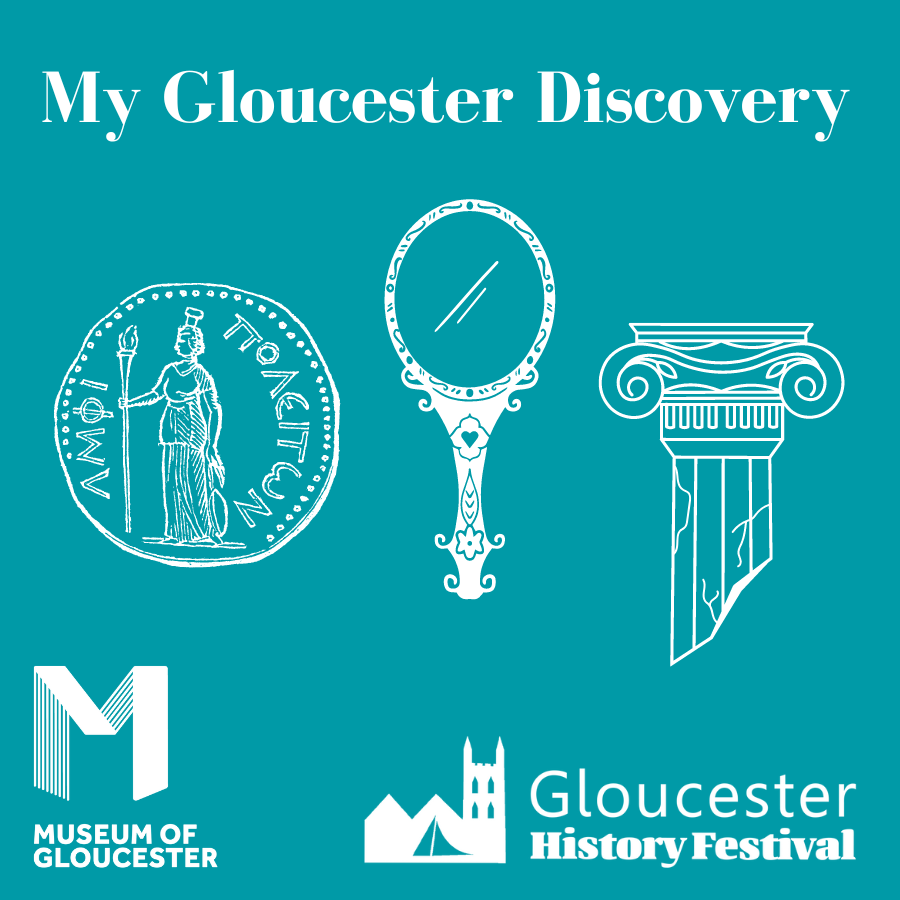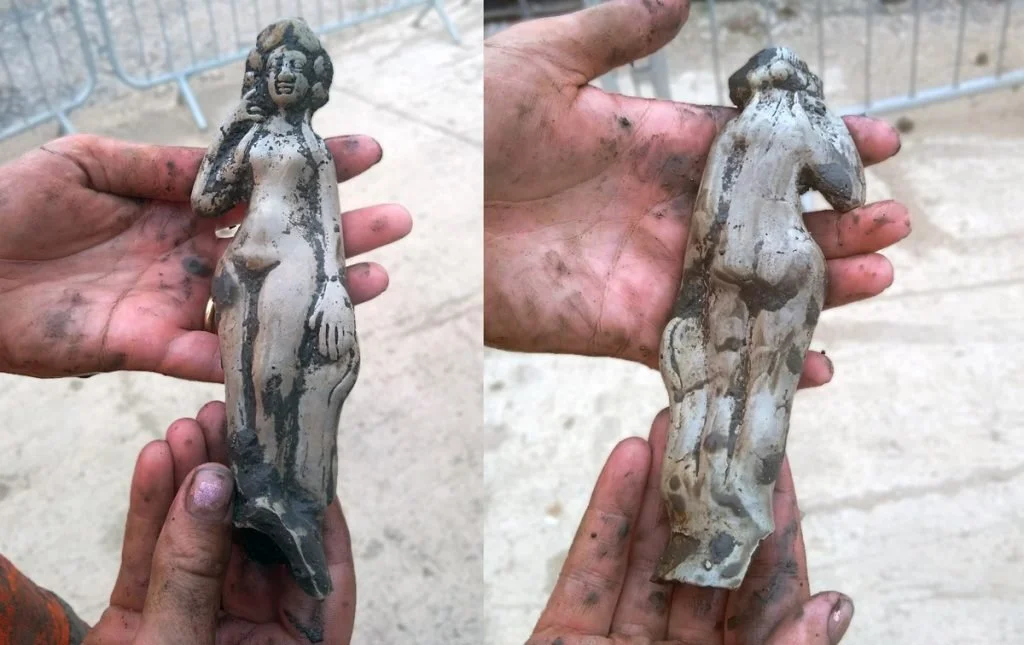#MyGloucesterDiscovery
Greg Jenner, Helen Carr and Yasmin Khan were just some of Britain’s leading historians who‘ve were filmed meeting their own special treasure at the Museum of Gloucester this year.
At the event on 13 September, Janina Ramirez joined one of Britain’s most admired medieval historians, Henry III expert David Carpenter, and local expert and illustrator Phil Moss to discuss their own favourite discoveries live at Blackfriars.
In partnership with the Gloucester History Festival, please view below further information and the intriguing stories of these objects as part of #MyGloucesterDiscovery.
Films of all items are listed first on this page, followed by further information and images of the four items discussed in the talk…for more information on new acquisitions and all other news, please sign up to your newsletter.
All discoveries!
Further information…
The Birdlip treasure…
These grave goods were found in the Summer of 1879 by accident by a poor road mender called Joseph Barnfield on the escarpment at Birdlip. The grave itself dates from about the same time that the Romans were starting to settle in Gloucester and therefore is a good piece of evidence for the cross over from Iron Age to Roman Gloucester. However, the pieces in it were heirlooms, maybe over a hundred years old, when they were buried.
The grave contained three bodies – one woman in the centre who from her grave goods and position we think was the most important of the trio. At either side of her were two men. As Victorian Archaeological practices were not as advanced as they are today and we no longer have the skeletons we do not know whether all the people in the grave were related, or how they died. However, the skull of the lady in the grave has been analysed to create a facial reconstruction. We have had to guess things like her hair style and colour and what her eye colour was. However, we can be more certain of her bone structure and facial features.
The most important object in the grave group is the bronze mirror. Only about 60 prehistoric bronze mirrors have ever been found in England, Ireland and Holland, so our mirror is incredibly rare. It is certainly the biggest that has ever been found (and we think it has the best and most elaborate pattern as well!) The maker of the mirror was an incredibly skilled and important craftsman, but even he had to have a practice. When the mirrors handle was detached for conservation in the 1970s the makers practice marks for the etching were revealed. He had obviously practiced the type of movements and the pressure he would have had to use in a place that no one would see. It is a good job that this practicing was done as under the handle there are definitely bits that seem to have not gone as planned.
The mirror would have been a real status object, belonging only to a very powerful and important person. It was next to the lady in the grave so we must assume it was hers. The mirror would have been highly polished when it was in use and the reflective surface would have supplied a good and clear, if slightly yellow, reflection. It could have been used for checking appearances in, much as a modern mirror would be today. The iron Age people were certainly concerned with their appearance and took care over it. The tweezers in the case would have been a treasured object for personal grooming. The mirror could have also been used as part of magical or religious rituals…
3D model of Roman Venus Figurine (© Cotswold Archeology)
The Eastgate Chamber
This underground chamber on Eastgate Street reveals the remains of city defences and the East gate, dating back to Gloucester's founding as a Roman settlement in around AD 68. The site includes Roman remains, the base of a 13th century tower and the Tudor 'horse-pool' where wagons and livestock were washed before market.
The Gloucester Tables Set
The Gloucester tabula set is the earliest surviving board and complete set of counters for the game tabula, a tables game and possible predecessor of backgammon. Dating from the 11th or early 12th century, it is an example of Romanesque art. Discovered on the site of Gloucester Castle in 1983, in the English city of Gloucester, it is now on display in the Museum of Gloucester!
Roman ‘Venus’ figurine
This wonderful item dates to 1st or 2nd century AD, so is around 1800-1900 years old. The statuette depicts the goddess Venus and is made of pipeclay, which were made in Gaul. It was found in a Roman rubbish pit that was part of a large suburb just outside the city walls. It’s completeness is what makes it rare, as often they were deliberately broken for healing or magic rituals.
The figurine is almost complete apart from some damage to the base and feet. Venus is shown in the typical pose for such figurines, standing with a garment held at her left side and her right arm raised to hold a tress of hair.
Roman pipeclay objects were made in Gaul and the Rhine-Moselle region, mainly in the late 1st and 2nd centuries AD. Religious figurines were probably used in daily observances within household shrines.
Site location: King’s Quarter, Gloucester, Gloucestershire
Project type: Archaeological excavation
Site type: Roman/medieval town
Discovery context: Pit
Please note: The Venue figurine will be back on display very soon!
Watch Andy Armstrong, City Archaeologist talk about this important item…












